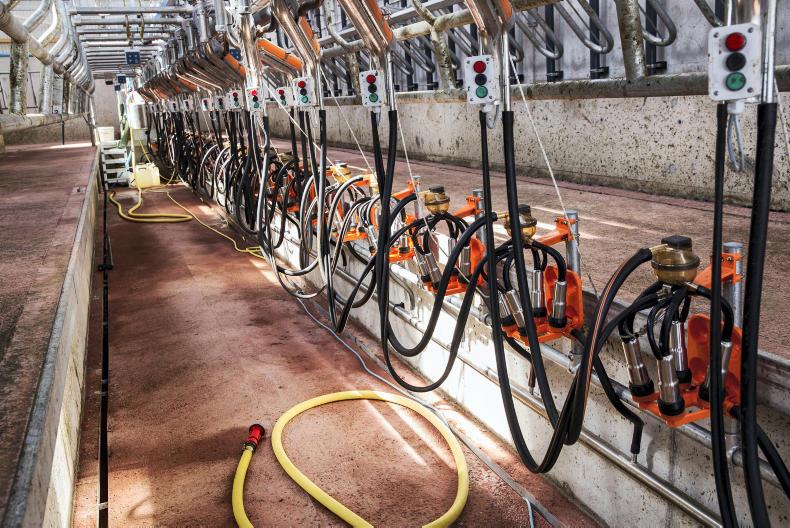It is important that farmers take into account soiled water when they are calculating slurry storage requirements for their farm. If this dirty water can be collected and stored separately then it will stay as dirty water. Soiled water is defined as dairy washings, excreta from the milking parlour and washdown from the collecting area
It is important that farmers take into account soiled water when they are calculating slurry storage requirements for their farm. If this dirty water can be collected and stored separately then it will stay as dirty water.
Soiled water is defined as dairy washings, excreta from the milking parlour and washdown from the collecting area
However, if this is directed into a tank that contains slurry then it will be viewed as slurry by the Department and the same conditions, such as the required closed period, must be adhered to. This could make a major difference to the slurry storage capacity required on the farm.
Soiled water is defined as dairy washings, excreta from the milking parlour and washdown from the collecting area.
The amount of dirty water produced can be significant. The amount of water used to washdown a parlour depends on the type of hose that is being used, according to research by AHDB. If a high-pressure hose is being used it could take 20l/cow/day for parlour washing. This increases to 30l/cow/day where a high-volume hose is used. This could mean 9,000l of water or more is required for one cow per year for washdown purposes.
The amount of soiled water produced on any farm must be kept to a minimum, according to nitrates regulations
Where this is kept as dirty water, it is permitted to be spread all-year-round, weather permitting, with storage only required for 15 days. This is a major cost and storage saving if it is kept separately. Otherwise, it would need to be stored for a minimum of 16 weeks in line with nitrates regulations. If not stored separately it will place a major strain on the slurry storage facilities on the farm.
Farmers must divert all clean water to a clean water outfall
The amount of soiled water produced on any farm must be kept to a minimum, according to nitrates regulations. Soiled water is also water that has come in contact with silage effluent, chemical fertilisers, vegetable washings and water used in washing farm machinery. Farmers must divert all clean water to a clean water outfall and also prevent clean water from becoming soiled. During a cross-compliance inspection, this is one area that the Department will focus on.
Example: If we take a simple example of a 150-cow herd being milked for a month after the closed period, 135,000l (135m3) of soiled water would be produced in one month, which must be stored for the next 16 weeks, at least. This equates to a standard three-bay tank with agitation points on either side which would be 16.8m long, 3.8m wide and 2.2m deep and give capacity for 140m3.







 This is a subscriber-only article
This is a subscriber-only article










SHARING OPTIONS: